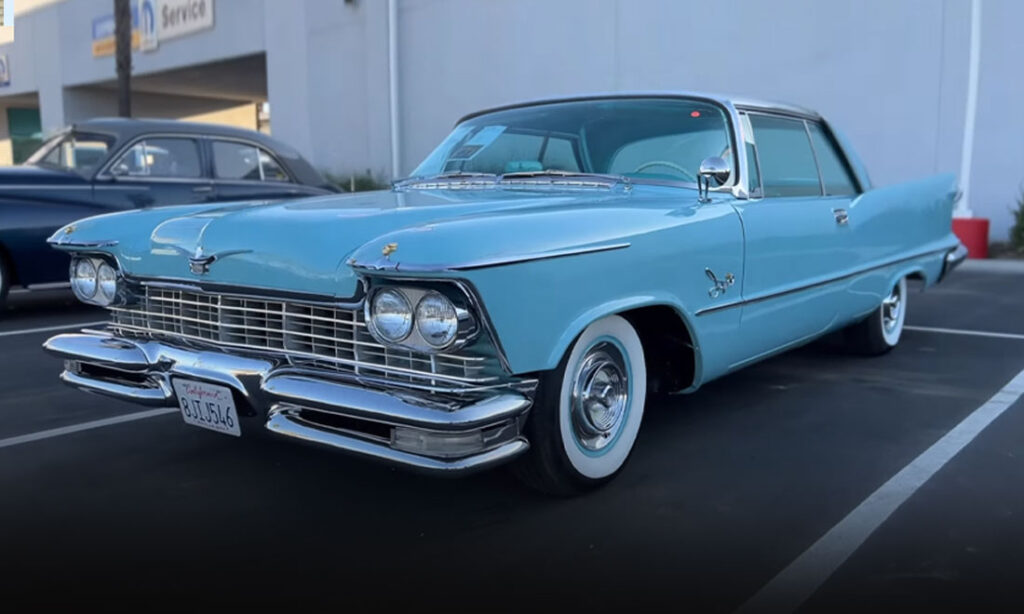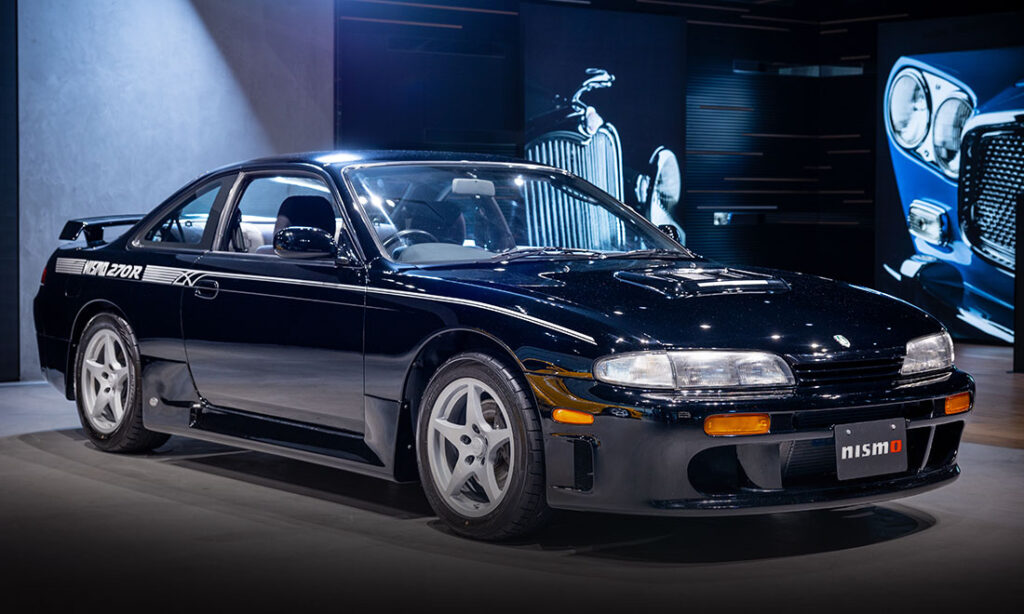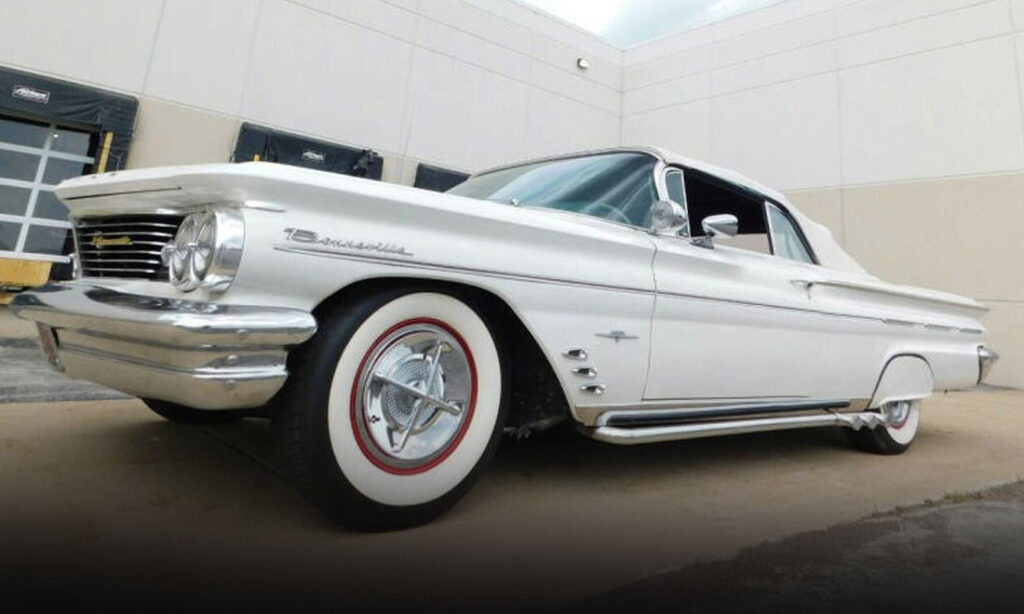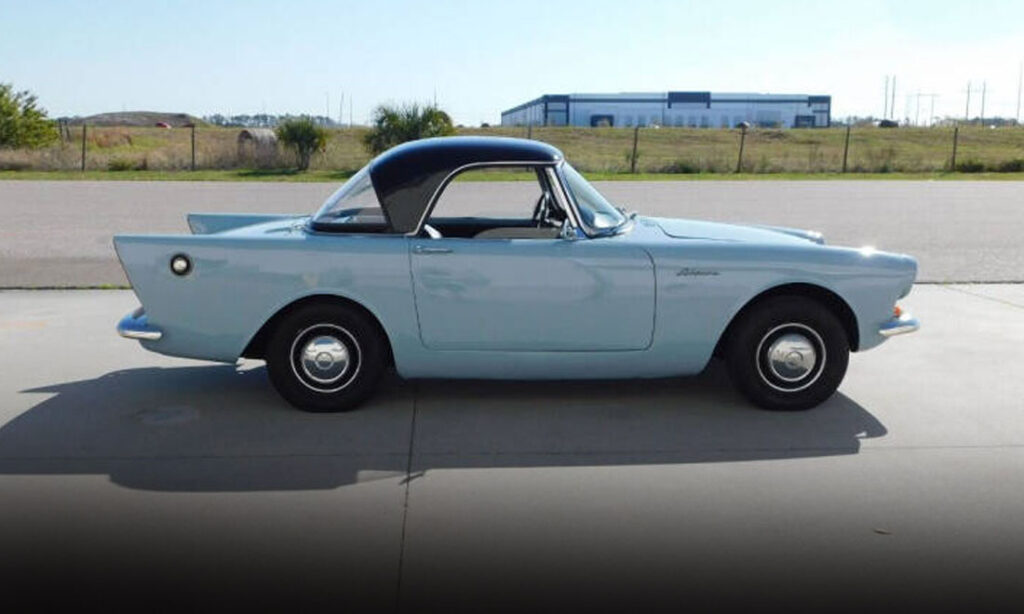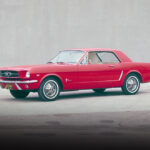The AMC Hornet Defines ‘70s Cars
The compact AMC Hornet managed to boost AMC’s sales with its broad appeal and even earned itself a cameo in a Bond flick.
The Unintentional Flagship
Some cars define their respective brands by design. Flagship models and halo cars are built and marketed as an automaker’s best effort, realizations of their highest automotive aspirations. Some cars, like the AMC Hornet, reveal themselves as brand-defining by dint of historical hindsight. Step back and consider AMC (American Motors Corporation), the fourth-largest US automaker from the mid-1950s through the 1980s.
AMC is best remembered for its often charming, sometimes innovative, always eminently affordable cars. From the Rambler to the Pacer, AMC proved time and again that they could differentiate themselves just enough to keep pace with Detroit’s Big Three. They did so not just on price or styling, but by AMC’s unique willingness to take risks Ford, GM, and Chrysler simply wouldn’t. These included naming a car the Gremlin, after little monsters that sabotage machinery, hiring fashion designers to create special edition interiors, and making awesome things for too short a time, like the one-year-only 1970 Rambler Rebel Machine.
If there is a car that best encapsulates AMC’s approach to the automotive market of the 1970s, it’s the Hornet. Not because the Hornet was the flashiest sports car (that was AMC’s AMX) or the quirkiest compact (AMC Pacer gets that nod) but because the Hornet was a very regular car punching far above its weight.
Hornet History, Before and After

The Hornet name, of course, didn’t start with AMC. Rather it predated the merger between Hudson and Nash-Kelvinator that created AMC in 1954. The first Hornet was a Hudson, the company’s basic full-size offering. Unusual for the day, the Hornet was built with a “step down” chassis wherein the floor pan is recessed, lowering the passenger compartment and the car’s overall center of gravity. That lower center of gravity improved handling, making the Hornet highly competitive in stock car racing.
The Hornet was dominant in the early ‘50s. Driver Marshall Teague drove his “Fabulous Hudson Hornet” to 12 wins in 13 AAA events in 1952. The Hornet netted 48 first-place finishes in ’52 including 27 of 34 NASCAR Grand National races. The car was even immortalized as Doc Hudson (voiced by actor and racecar driver Paul Newman) in the movie Cars. The Hornet continued on to a second-generation post-merger but discontinued it after 1957.
AMC Hornet Evolutions
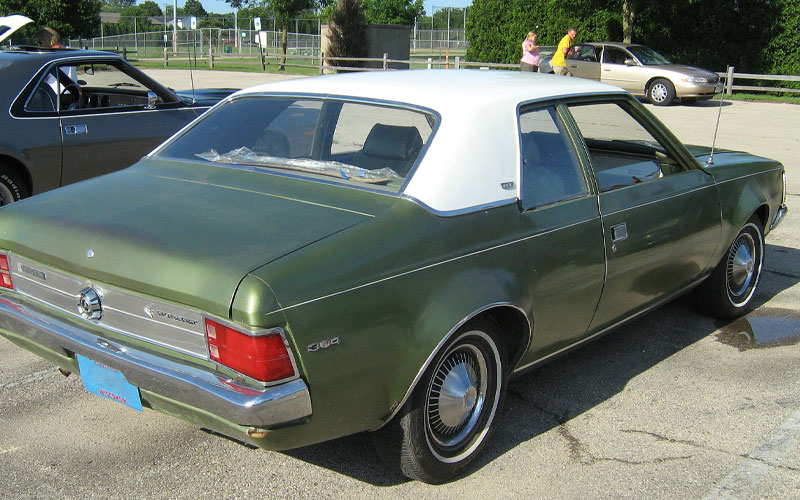
The Hornet name remained dormant for over a decade until AMC was looking to replace the long-running Rambler with a new compact model for 1970. The AMC Hornet debuted that year offered as a two- or four-door sedan. Unlike most compact cars of the day, the Hornet didn’t offer a four-cylinder under the hood. Instead, buyers could choose between a pair of straight-six engines, a standard 199 cu.-in. (128 horsepower) or a 232 cu.-in. (145/155 horsepower), and a 304 cu.-in. V8 (210 horsepower). Transmissions included a three-speed manual or three-speed automatic.

In 1971, the Hornet received the muscle car treatment with the addition of the SC/360. The SC/360 took the first half of its name from a prior AMC muscle car, the 1969 SC/Rambler, and from its 360 cu.-in. V8. The 360 V8 produced 245 horsepower in its standard form while a high-performance “Go” package added an available four-speed manual with Hurst shifter plus Ram Air induction and a four-barrel carburetor for up to 285 horsepower. Thus equipped, the SC/360 could make the run from zero to sixty mph in 6.7 seconds, a very respectable time in 1971. That same year, AMC added a four-door wagon, the Sportabout, to available Hornet body styles and dropped the 199 cu.-in. I-6, making the 232cu.-in. I-6 the Hornet’s standard engine.
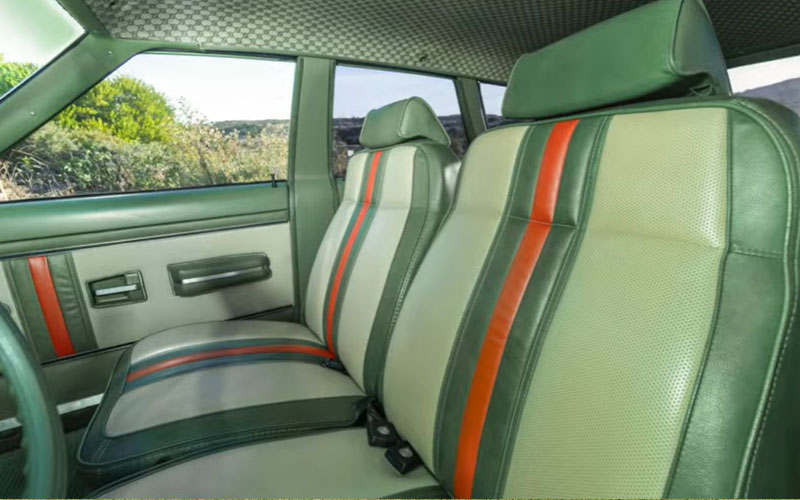
1972 introduced one of the most charmingly incongruous collaborations when AMC hired the Italian fashion design house Gucci to create an upscale interior trim for the Hornet’s Sportabout wagon. The Gucci Sportabout option cost roughly $140 and added a Gucci print headliner, multi-color (mostly beige) leather upholstery, and unique paint options like Grasshopper Green and Yuca Tan. This wasn’t the only AMC getting Euro styling. That same year the AMC Javelin got an interior option designed by Pierre Cardin. The AMC Matador also got a high-fashion version a few years later in 1974 with its Oleg Cassini edition. Both the Hornet and Pacer X also got denim-infused interiors and indigo-blue exteriors thanks to a partnership with Levi Strauss.
A hatchback body style was added for the Hornet’s 1973 model year. Along with the hatchback was the Mini-Camper add-on, a kind of pup tent canopy that could be used in conjunction with the open hatch. The next four model years mostly carried over with minor changes to the Hornet before AMC refashioned the compact into the new semi-luxury AMC Concord while the Pacer continued on as the company’s more budget-focused compact.

The Hornet name returned once again in 2023 with the Dodge Hornet, a subcompact crossover. This wasn’t Dodge cribbing a name. Recall that the current Stellantis is the former Fiat/Chrysler formerly Chrysler/Dodge/Jeep the company that bought out and absorbed a struggling AMC in the mid-1980s.
Hornet, AMC Hornet
Amongst classic Bond cars, the Hornet is indeed an outlier. While the Hornet was no DB5, Mustang, or Lotus Esprit, it still managed one of movie history’s greatest car stunts. In The Man with the Golden Gun, Roger Moore’s Bond drives an AMC Hornet in a car chase out of Bangkok, Thailand into the surrounding countryside. The principal stunt for the case was a corkscrew jump and while it may look faked, it was indeed genuine.
The stunt was licensed from Eon Productions and designed by Raymond McHenry. The stunt’s physics, the distance, ramp angle, and the weight and speed of the car, were all fine-tuned at Cornell’s Aeronautics Laboratory and further refined as part of a traveling stunt driving tour sponsored by AMC, the All American Thrill Show, in which AMC cars performed stunt maneuvers including a corkscrew jump dubbed the “Astro Special.”
For The Man with the Golden Gun, stunt driver Loren “Bump” Willard successfully made the jump in a single take (earning himself a $30,000 bonus in the process). The car launched at 40 mph, but the choice was made in post-production to slow the frame rate to lengthen the shot. As a result, the jump looks less than perfectly authentic. Another poor post-production choice was in sound editing. The film’s composer, John Barry, inserted a whimsical slide whistle for the jump. The Roger Moore-era is often remembered as the Bond franchise at its corniest and its choices like this slide whistle sound effect are to blame.
The Hornet wasn’t the only AMC product that got prominent placement in the movie. The AMC Matador, an Oleg Cassini edition no less, was used as the escape vehicle for the movie’s bad guy, Fransico Scaramanga (played by Christopher Lee). In the film, the Matador was modified into a flying car, making for an easy getaway for the bad guys. Unlike the Hornet, the Matador didn’t take flight, the take-off shot was done with a scale model.
AMC Hornet Legacy
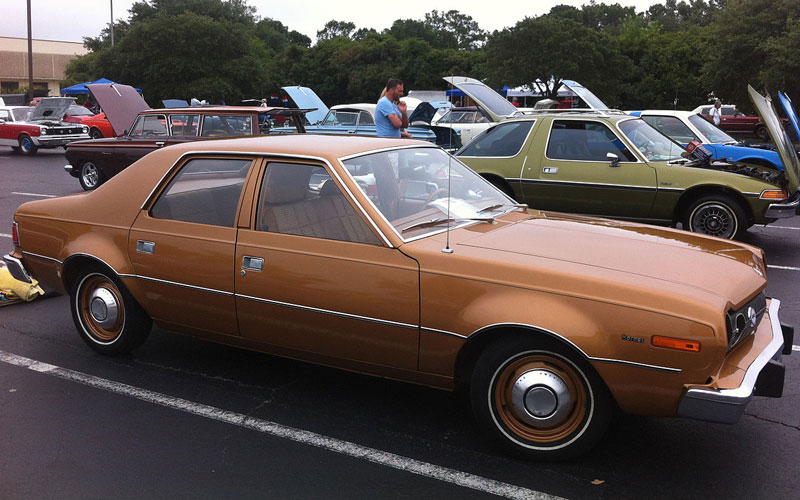
The AMC Hornet doesn’t receive the plaudits from enthusiasts that the Rambler Rebel does, or the retrospective fondness bestowed on the Pacer, but the Hornet probably saved AMC as a company during the 1970s. As the company’s top-selling model, the Hornet moved 145,458 units in 1974, making up nearly a third of sales in AMC’s most successful sales year (tallying just over 431,000 units that year). It’s not too much of a stretch to say that the Hornet’s success ensured the survival of the Jeep brand, then a part of AMC.


